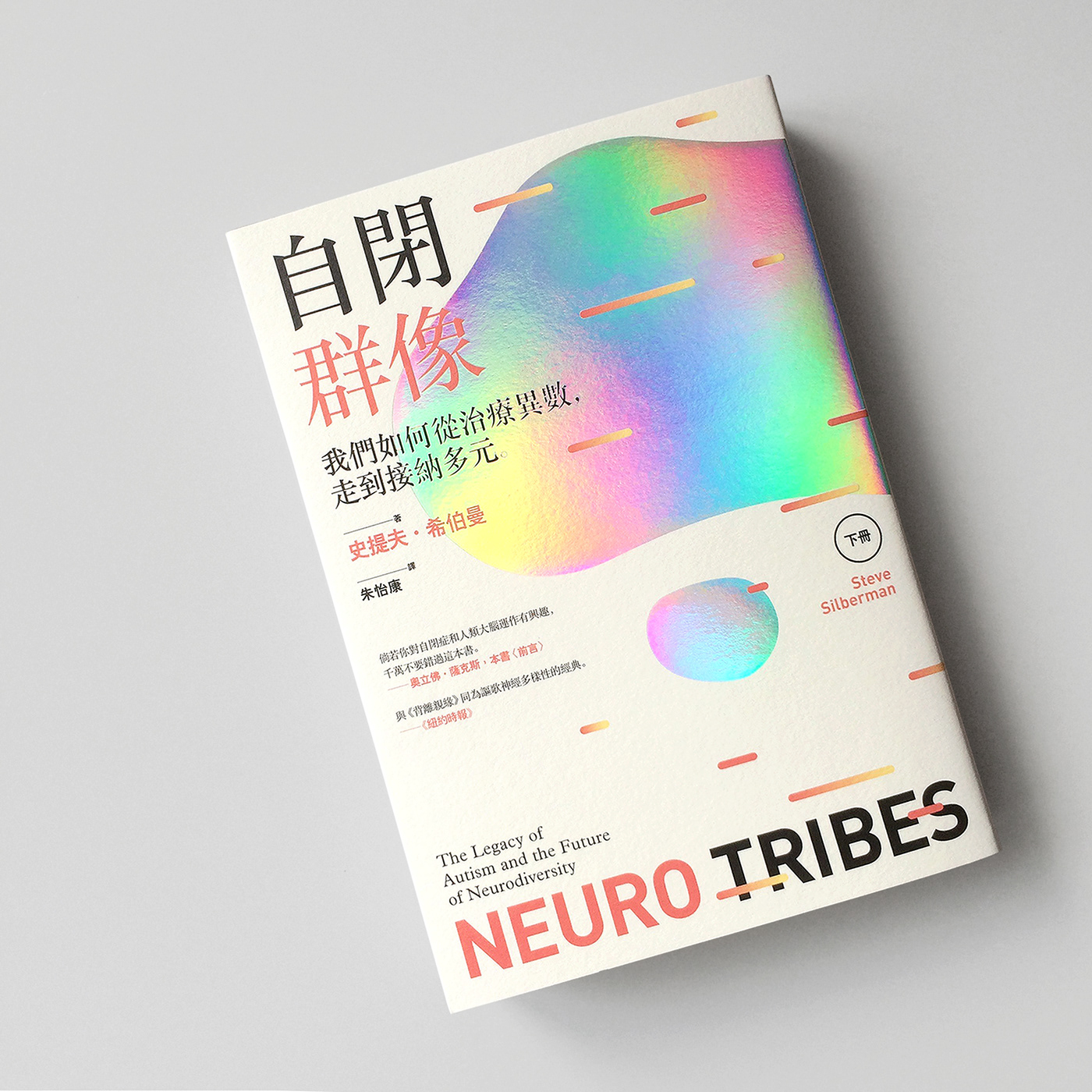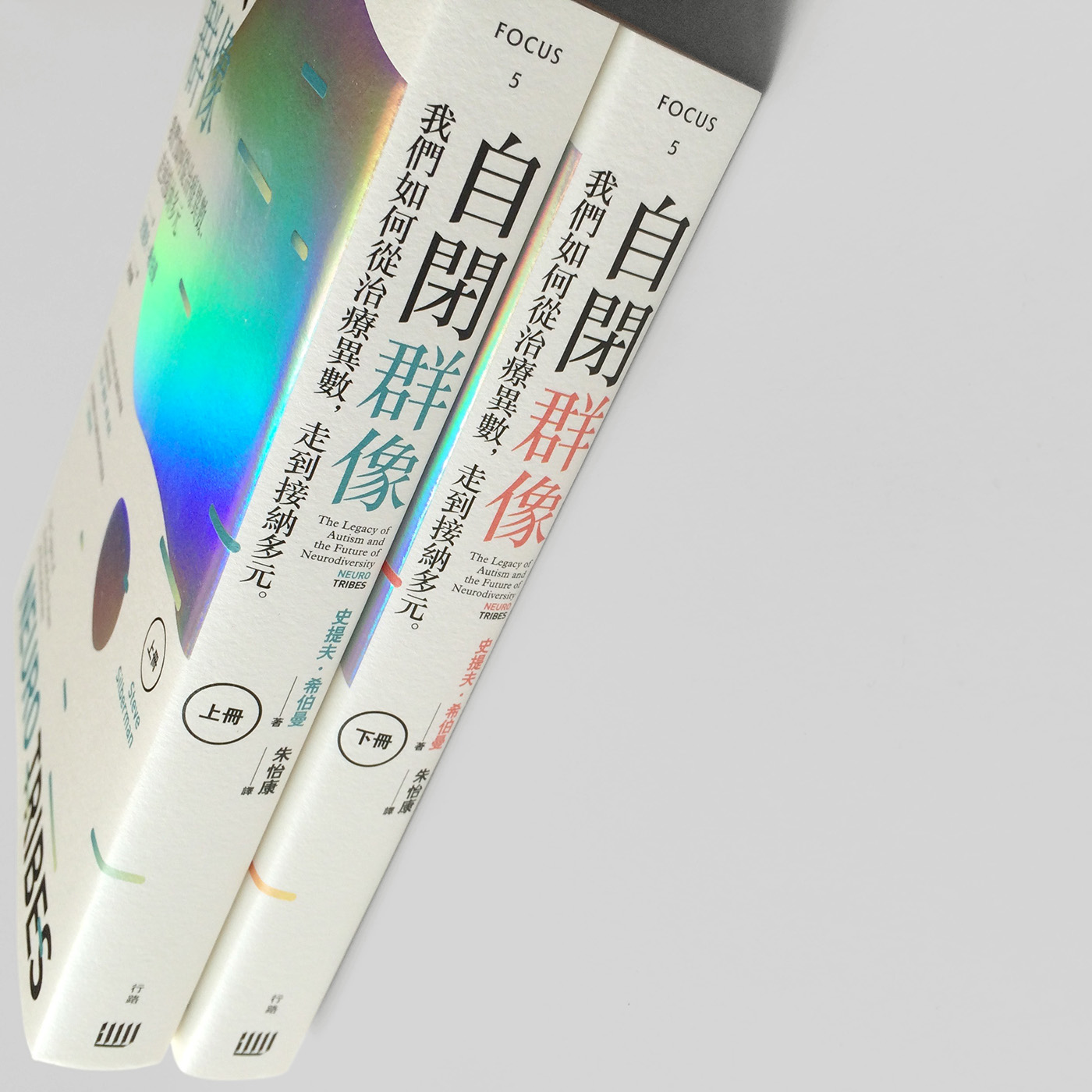《自閉群像:我們如何從治療異數,走到接納多元。》
NeuroTribes: The Legacy of Autism and the Future of Neurodiversity
By Steve Silberman
NeuroTribes: The Legacy of Autism and the Future of Neurodiversity
By Steve Silberman

「謳歌神經多樣性的經典。」(紐約時報)
鐳射膜的多彩和漸層分別隱喻了自閉症是廣泛光譜以及對多元的接納:「相互調適才是與自閉症人士的共處之道」(紐約時報評論),也讓我聯想到評論裡,關於眼界的開闊這句:「點出我們社會對自閉症態度的變化:只要反射的光有一點點不同,眼界就足以煥然一新。」
且鐳射膜的些許鏡面效果,給了我這樣的提示:每個人(譬如鏡面裡的「自己」)都有可能被他人視為異數,因此我們更必須懂得尊重多元。
The multiple colors and gradients of the holographic film represent the wide spectrum of autism and the acceptance to pluralism: “At its heart is a plea for the world to make accommodations for those with autism, not the other way around.”–The New York Times.
It also reminds me of that review, in which there is a quotation about one’s horizon: “our culture’s evolving attitude toward autism: If the light bounces off something a little differently, it can be seen in a whole new way.”
The limited mirror effect of the holographic film also made me realize that: Every person is like their own reflection in the mirror, and can be regarded by others as the anomaly. Hence we must understand and respect the pluralism.
It also reminds me of that review, in which there is a quotation about one’s horizon: “our culture’s evolving attitude toward autism: If the light bounces off something a little differently, it can be seen in a whole new way.”
The limited mirror effect of the holographic film also made me realize that: Every person is like their own reflection in the mirror, and can be regarded by others as the anomaly. Hence we must understand and respect the pluralism.












